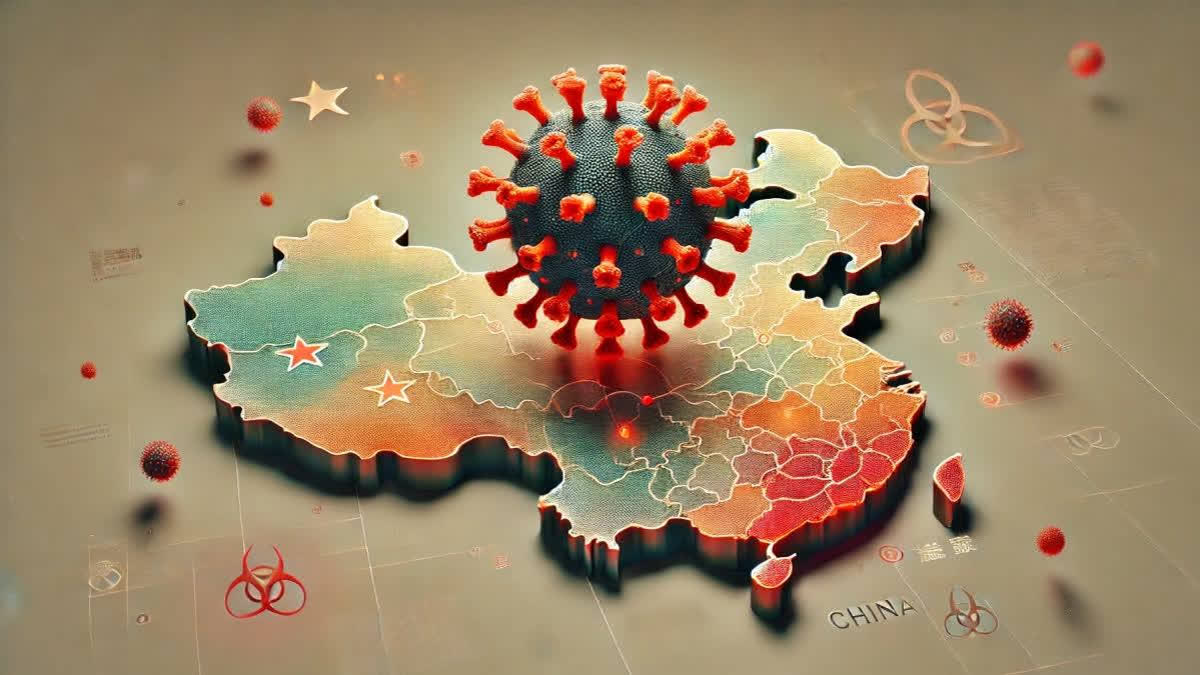As the world remembers the COVID-19 pandemic that began in Wuhan, China, another respiratory virus, HMPV virus (Human Metapneumovirus), is making headlines in China. However, health experts emphasize that this is not another COVID-19 crisis.
Rising Cases of HMPV Virus in China
Recent data from China’s Center for Disease Control and Prevention (CDC) shows that cases of the HMPV virus have increased, especially among children under 14. Between December 23 and 29, northern China experienced a significant rise in respiratory infections, including HMPV, influenza, rhinovirus, and mycoplasma pneumoniae.
Online videos showing crowded hospitals have sparked concerns, but experts reassure that the situation is vastly different from the early days of COVID-19.

Understanding the HMPV Virus
The HMPV virus has been around for decades. First identified in 2001 in the Netherlands, it is known to cause respiratory illnesses, primarily during colder seasons. Here’s what you need to know:
Symptoms of the HMPV Virus
- Common symptoms include coughing, wheezing, runny nose, and sore throat.
- These symptoms usually resolve on their own within 3–6 days.
- In severe cases, it can lead to bronchitis or pneumonia, particularly in young children, the elderly, and immunocompromised individuals.
Most people contract the HMPV virus before the age of 5, building partial immunity. For reinfections, symptoms are generally milder.
How the HMPV Virus Spreads
The virus spreads through:
- Respiratory droplets from coughing or sneezing.
- Direct contact with an infected person.
- Touching contaminated surfaces like phones and doorknobs.
While there is no specific antiviral treatment for the HMPV virus, severe cases may require oxygen therapy or antibiotics for secondary infections.
How HMPV Virus Differs from COVID-19
Unlike COVID-19, the HMPV virus is not new. This is a key reason why it doesn’t pose the same global threat. Experts note:
- Extensive research: The virus has been studied for decades, and its spread, symptoms, and treatments are well understood.
- No pandemic potential: COVID-19 was novel and spread rapidly because humans had no prior immunity. In contrast, most people already have some level of immunity to HMPV.
Jill Carr, a virologist at Flinders University, explains, “HMPV can cause severe illness in high-risk groups, but it’s nothing like the initial COVID-19 outbreak. We know how to diagnose and manage it effectively.”
WHO’s Perspective on HMPV Virus
The World Health Organization (WHO) views the rise in HMPV cases as part of seasonal trends. A spokesperson stated that respiratory infections typically increase during winter, and current influenza activity levels are lower than last year.
China’s CDC has issued guidelines to reduce the spread of the virus:
- Practice good hygiene.
- Cover your mouth and nose when sneezing or coughing.
- Wash hands frequently for at least 20 seconds.
- Wear masks in crowded spaces.
Why Monitoring HMPV Virus is Still Important
While the HMPV virus is not a pandemic threat, the rise in cases highlights the importance of public health monitoring. Overburdened healthcare systems in densely populated areas like China could face challenges if cases continue to rise.
Experts recommend robust surveillance and timely responses to mitigate risks. Sharing data on the virus’s spread can help prevent local outbreaks from escalating into larger health crises.
The HMPV virus is not a new health emergency, but its rise in cases underscores the importance of vigilance. Understanding its symptoms, how it spreads, and how to manage it can prevent unnecessary panic. Unlike COVID-19, this is a virus we know well and can control effectively.









